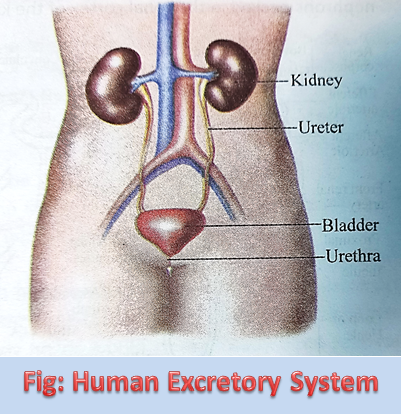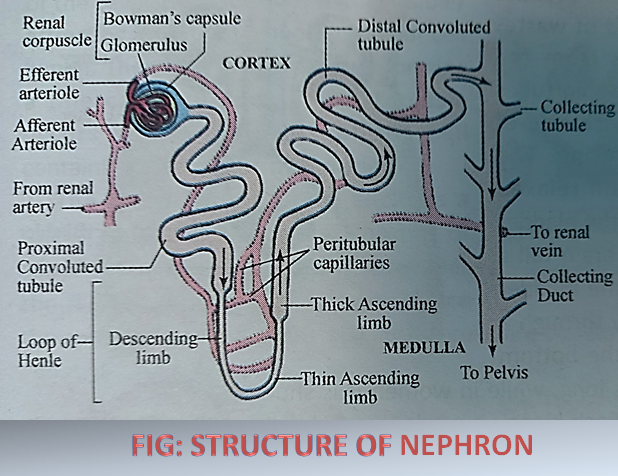Human Excretory System:
The Human excretory system functions to remove waste from the human body. This system consists of specialized structures and capillary networks that assist in the excretory process. The human excretory system includes the kidney and its functional unit, the nephron. The excretory activity of the kidney is modulated by specialized hormones that regulate the amount of absorption within the nephron.
Kidney:
Kidney is a bean-shaped organ located on either side of the backbone at about the level of the stomach and liver. Blood enters the kidneys through renal arteries and leaves through renal veins. Tubes are called ureters and carry waste products from the kidneys to the urinary bladder for storage or for release.

The product of the kidneys is urine. It is a watery solution of waste products, salts organic compounds, and two important nitrogen compounds:
- Uric
- Urea
Nephron:
There are more than a million nephrons packed in the renal cortex of the kidney. The nephron is made up of the glomerulus and a system of tubules. The glomerulus is a network of intertwined capillaries mass. The glomerulus is enclosed in a cup-shaped structure called the Bowman’s capsule.

The space between the Bowman’s capsule and the glomerulus is called the Bowman’s space. Fluid is filtered from the capillaries and the filtrate is collected into the bowman’s space through the glomerular filtration membrane. The fluid that is filtered is known as filtrate. The glomerular filtration membrane allows only elements that are small enough to pass through. The filtrate then moves only elements are added or removed. The tubules are surrounded by capillary networks known as vasta recta.